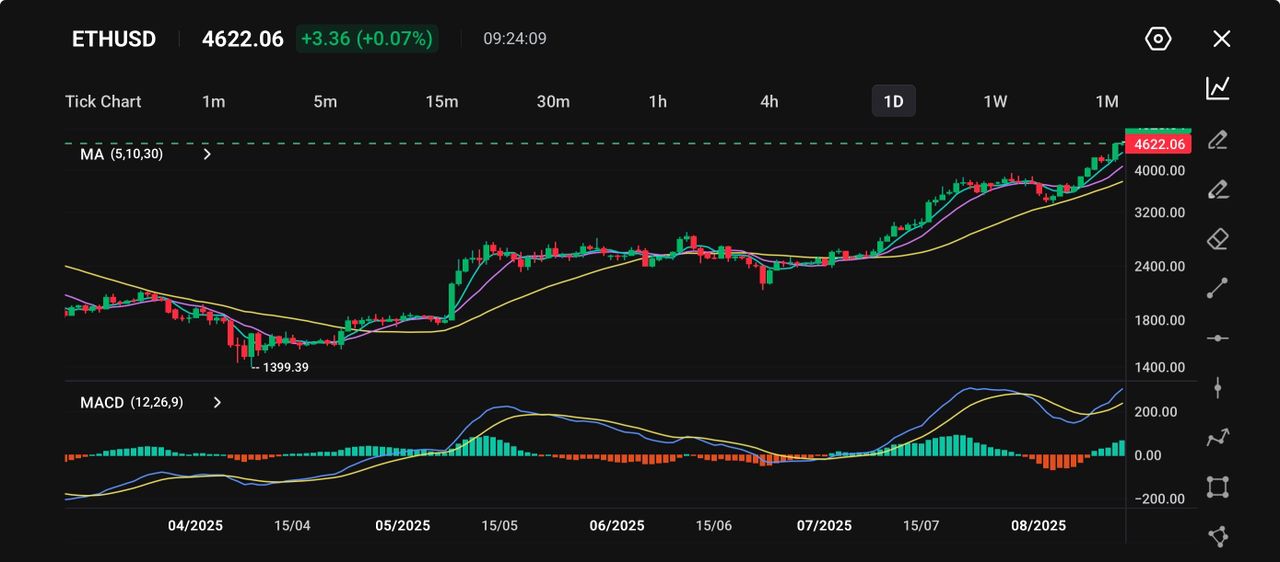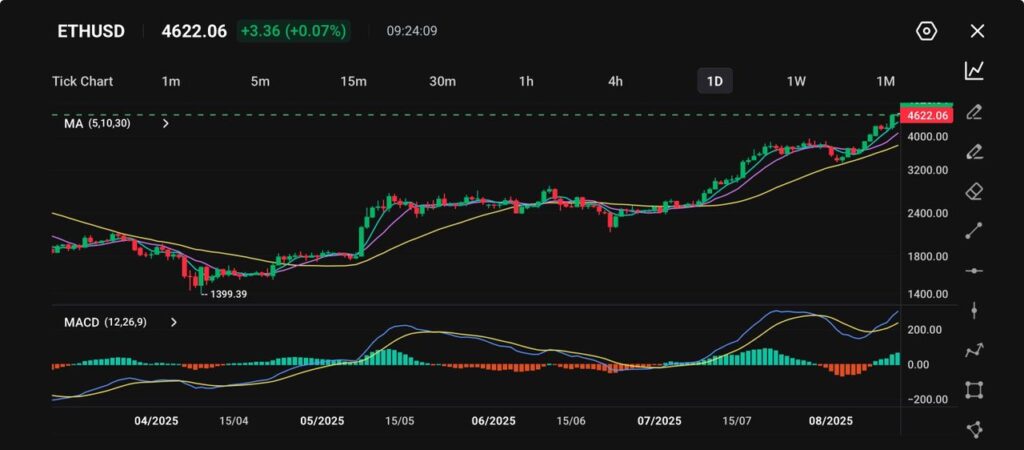Spain’s July CPI reaches 2.7%, supporting ECB’s summer pause; core inflation rises to 2.3%
Ethereum Approaches All-Time High Amid ETF Inflow Surge

The cryptocurrency market kicked off on a strong footing as a wave of inflows into spot Ether ETFs coincided with an improved appetite for risk. Daily net inflows reached $1.01 billion, while Ethereum’s total value locked has surpassed the $90 billion threshold, signalling robust institutional interest alongside supportive cross-asset positioning.
With Bitcoin trading at $119,335 and prominent forecasts pointing to $150,000 by year-end, traders expect ETH to follow suit as its price correlation with BTC strengthens.
At present, ETH/USD is holding at $4,622.06, up $3.36 or 0.07%, keeping it within touching distance of the $4,878 peak set in November 2021. This climb extends from the April low of $1,399.39 and builds on the early-August breakout above the $4,300 consolidation band.
Market sentiment was further buoyed by news that BitMine Immersion Technologies intends to raise as much as $20 billion to acquire ETH. Looking ahead, analysts note that in previous bull runs, ETH often traded at 30%–35% of Bitcoin’s market capitalisation. If BTC achieves $150,000, that would translate to roughly $8,656 for ETH. A more restrained estimate, based on a 21.70%–30% ratio, suggests a range of $5,376–$7,420.
Technical Analysis
Ethereum (ETH/USD) has staged a sharp recovery since its April trough near 1,399, clearing a series of resistance levels and recently advancing to 4,622.

The move has been supported by consistently higher highs and higher lows, with price action staying well above the short- and medium-term moving averages.
The MACD shows a solid bullish momentum with a widening gap between the MACD and signal lines, suggesting buying pressure remains intact.
In the near term, the key level to watch is the current high around 4,620–4,650. A decisive breakout above could set the stage for a push toward the psychological 5,000 level. However, if momentum stalls, initial support lies near 4,200, with stronger backing around 3,800. Overall bias remains bullish while ETH holds above its rising 30-day moving average.
Measured Outlook
A sustained daily close above $4,878 would likely encourage further momentum towards $5,000, with potential to extend into the $5,376–$7,420 bracket if Bitcoin continues its climb and ETF inflows remain solid. Conversely, failure to reclaim the previous high, or a slowdown in ETF demand, could spark a retreat towards $4,480 and subsequently $4,300 as the uptrend consolidates.




